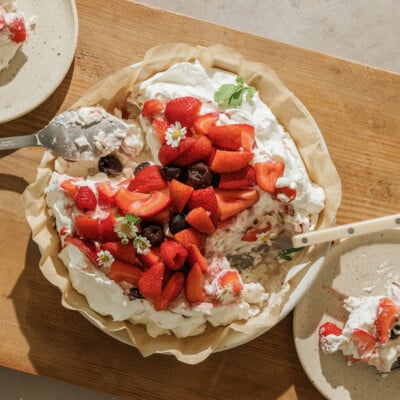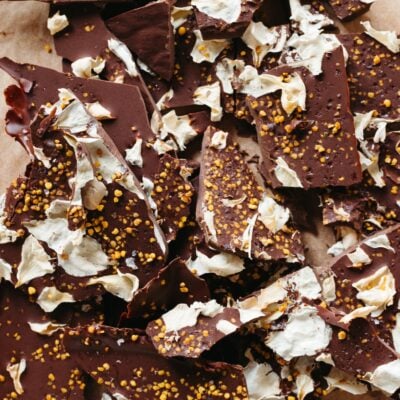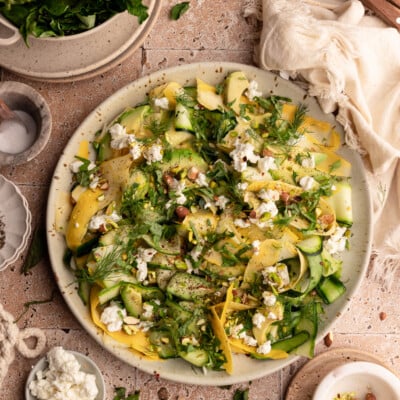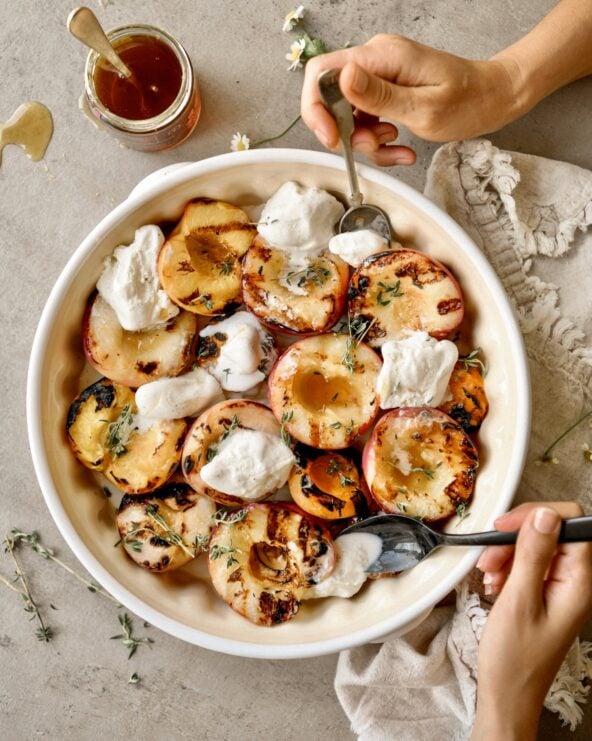Move over Rosé, there’s a new summer wine on the scene. It’s a bold claim, we know, but ever since our recent Riesling tasting a few weeks ago, every member of our team is a total convert. Sure, it could have been the picturesque scene at Jeffrey’s that had us feeling fuzzy, or the guidance of Master Sommelier June Rodil that had us engaged and excited, but honestly, the wines were just so good. I could go on and on, but you’re better off checking out the gorgeous photos from the day and reading all of June’s helpful tips for becoming a Reisling enthusiast. Click through and let us know what you think: are you a die hard Rosé fan through-and-through, or are you onto the next thing with Riesling?
*photography by Jessica Attie

First things first: You recently passed the Master Sommelier exam — one of the hardest exams in the world and the focus of the popular documentary, Somm. Tell us everything.
It’s still setting in! Of course, I’m excited, relieved, stoked, elated, etc! It was a lot of time, sacrifice, and wine! I started really getting serious about the exam in 2007 when I started with Uchi Restaurant Group. There are four levels of testing and it’s taken me seven years to get through it. Each journey is different for each person; some people blaze through the process (I think 4 or 5 years may be the quickest anyone has ever gone through it), some take a decade or more, and some people never pass it.
Being a Beverage Director or a Sommelier is a new profession in our industry. By no means do I think that being a Master Sommelier defines who I am as a person. Rather it’s an achievement and honor that makes me feel good about what I do and gives me confidence in myself. I hope to be able to mentor people in the process in the future.

What makes Rieslings special?
Riesling refers to the name of the grape. Like Chardonnay or Sauvignon Blanc, Riesling has it’s own characteristics and regions where it’s best grown. The most highly regarded country for Riesling is Germany — which I think makes it super difficult for consumers to understand. German language isn’t the easiest to maneuver when looking at labels.
But Riesling is rad cause it’s so versatile and expresses where it’s from — wine nerds say that it “gives a sense of place.” Like all agriculture — Idaho Potatoes, California Oranges, or Poteet Texas Strawberries — German Rieslings are very distinctive based on the region and style. What’s cool about it (and also a confusing aspect) is that it comes in many forms: sparkling, bone-dry, off-dry (otherwise known as slightly-sweet), sweet, and hella sweet.
Coming into this tasting, I had a preconceived notion that all Rieslings are too sweet for my taste. Is that a common misconception?
Lots of people think that Riesling is sweet, almost too sweet to drink. The brand Blue Nun (which was actually a blend and not Riesling) catapulted the consumer idea that all German wines were sweet and inexpensive plonk.

For our tasting, we focused on only German Rieslings — the origin of the grape and the people who do it best (no offense to the amazing Riesling producers from other countries!). I wanted to show a good array of styles that you can get.

What do you love about Rieslings?
Everything! What’s not to love? It’s refreshing, it hits so many flavors: citrus, stonefruits, tropical fruits, florals, minerals, saltiness, savory — there’s a flavor in there for everyone. Also, it pairs with everything. I mean everything. There’s not one style of cuisine that wouldn’t pair well with a Riesling. It’s the little black dress of the wine world — it can be casual, sophisticated, sassy, spicy, elegant, fun, upbeat, and racy.

Tell us about our first wine: Dr. Nägler Riesling Sekt Extra Trocken (Sparkling) from Rheingau, Germany
Riesling is very fresh and acidic (that awesome thing that makes your mouth water and want to eat!), so it’s perfect in sparkling form. More often than not, a sparkling Riesling is dry with notes of fresh meyer lemon, white peaches, and dried white flowers. It’s not at sweet as Prosecco but not as savory or serious as a Champagne. It hits that’s middle spot really nicely.

We’re convinced you have the best job ever. Can you tell us a little more about what you do at Jeffrey’s and McGuire Moorman Hospitality?
I am directly responsible for anything and everything beverage for MMH. While my speciality is in wine, I am also responsible for every spirit, cocktail, beer, coffee, tea and non-alcoholic beverage that is served. This includes product placement (which is the most fun!), maintaining business costs (basically making sure the company makes money while still showing quality to our guests), staff education on all of the above, and for every location or event (that’s 6 restaurants, 2 retail spots, catering bookings, and all future projects), style of service, style of glassware, pricing, vendor relationships, etc.
It’s a lot and I never get bored. I have an amazing assistant, Daisy Ryan, without whom I couldn’t do my job well. Also, I work on the floor at Jeffrey’s about twice a week and when we have special events.

Second was Juliusspital Würzberger Riesling Trocken, 2015 from Franken, Germany
This wine comes in an amazing, traditional bottle of Franken called a bocksbeutel. Juliusspital is an iconic winemaker who makes serious, racy, dry Rieslings in a land where beer has become the biggest beverage fashion. He’s a pillar of tradition. If you like Chablis and Grüner Veltliner this is the wine for you.

For new Riesling converts like myself, what tips can you offer someone looking to purchase a bottle (or two) for the first time?
1. You can get a great bottle of Riesling for $20 or less. It’s a great value for the quality and by no means a bank-breaker. Go for two bottles rather than one expensive one so you can try more than one style, region, or producer of Riesling.
2. Look at the alcohol level on the label. If it’s less than 12% abv (alcohol by volume) it’s going to have some amount of sweetness to it. The lower the alcohol percentage, the sweeter the wine. If it’s more than 12% it will be dry.
3. Always, always ask your retailer for suggestions. Tell them what wines you know you like, i.e. Buttery California Chardonnays or Super Fresh and Dry Sauvignon Blanc. They are there to help!

Do you have any pointers on pairing wine with food?
It’s all about weight and complimentary flavors. First, think about the weight of your food; it should match the weight of your wine. We had sashimi and melons to enhance how light in body and racy Rieslings can be. The heavier Rieslings, like the Auslese went well with the richer cheeses, particularly the blue cheese, because the weight of the wine matched the heaviness and bold notes of the cheese. Also, the sweeter the Riesling the more spice the food can have, hence the shisito peppers were an amazing compliment. The sweetness soothes your palate from the spice.

Third was my personal favorite, Robert Weil Riesling Trocken, 2013 from Rheingau, Germany
Ah, the Tiffany Blue flute (German wine bottle), so elegant and so classy — just like the wine. Remember, “Trocken” is dry, but this one has a little more weight and rounded richness on the mid palate than the Juliusspital. When you smell it, you think it may be sweet — it has sweet fruit notes, and rather than savory herbs, its more like honey and chamomile tea. Your mind does a double take when you taste it and it’s totally dry. Rheingau is the oldest winemaking region in Germany and where many people feel the first Rieslings were made.

Camille swirls her glass to draw oxygen into the wine.

The day’s prettiest bottle title was awarded to Max Ferd. Richter Mülheimer Sonnenlay Riesling Kabinett, 2009 from Mosel, Germany
Mosel is probably the most popular region for Riesling in Germany and my personal favorite. They are known for off-dry styles and what I like to think of as the perfect amount of sugar in my lemonade. I think a lot of people think they hate sugar, but think of the best peach you’ve ever eaten. There’s sugar in that thing! That’s what makes it balanced, what makes it taste so good — a little ripened sugar goes a long way with that fresh tartness.

As we gradually moved toward the end of our tasting, we enjoyed some sweeter wines like this Robert Weil Keidrich Gräfenberg Auslese Riesling, 2009 from Rheingau, Germany
This is the best of the best of the best. “Auslese” generally means a sweeter wine that’s meant to age for a very long time — Riesling is one of the longest aged wines in the world! While amazing in it’s youth (and awesome with spicy foods and lighter desserts) this wine is a single vineyard (Keidrich Gräfenberg) wine that only gets better as it ages (think the wine equivalent of Betty Bacall or, for more modern purposes, Halle Berry). This wine is in its adolescence but still tasting like sweet nectar; she’s totally the Homecoming Queen.

And for the grande finale, Domdechant Werner Hochheimer Kirchenstück Riesing Auslese, 1998 from Rheingau, Germany
While difficult to find for purchase, I wanted to share an older, more mature version of an Auslese style Riesling from the same region to truly understand how the a sweet wine evolves over time, gains complexity, elegance, and starts really becoming seamless. Honestly, it’s exactly like Lauren Bacall — getting more beautiful and more comfortable with herself over time, but still maintaining a youthful aura and appeal.

Got a hankering to try some amazing Riesling yourself? The MMH team is hosting a German Wines of Summer event on July 26th at Josephine House in Austin. Book a spot by e-mailing reservations@




